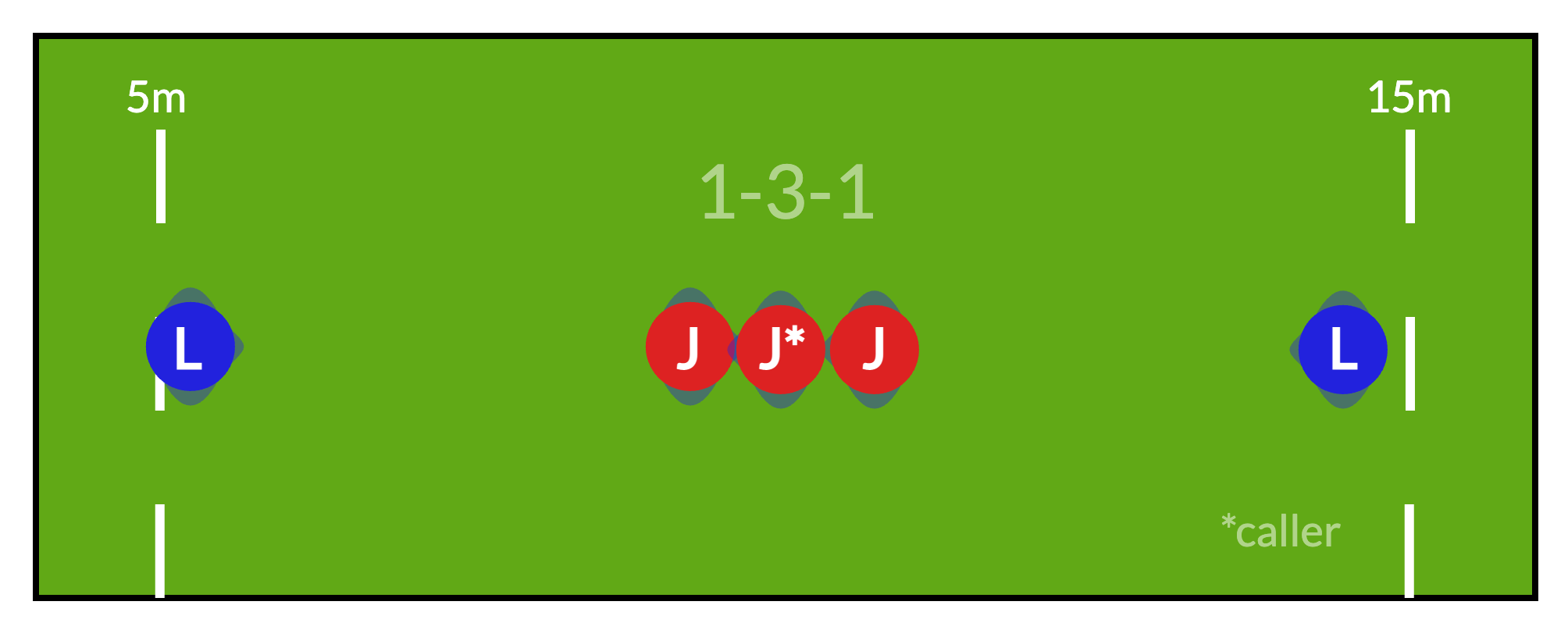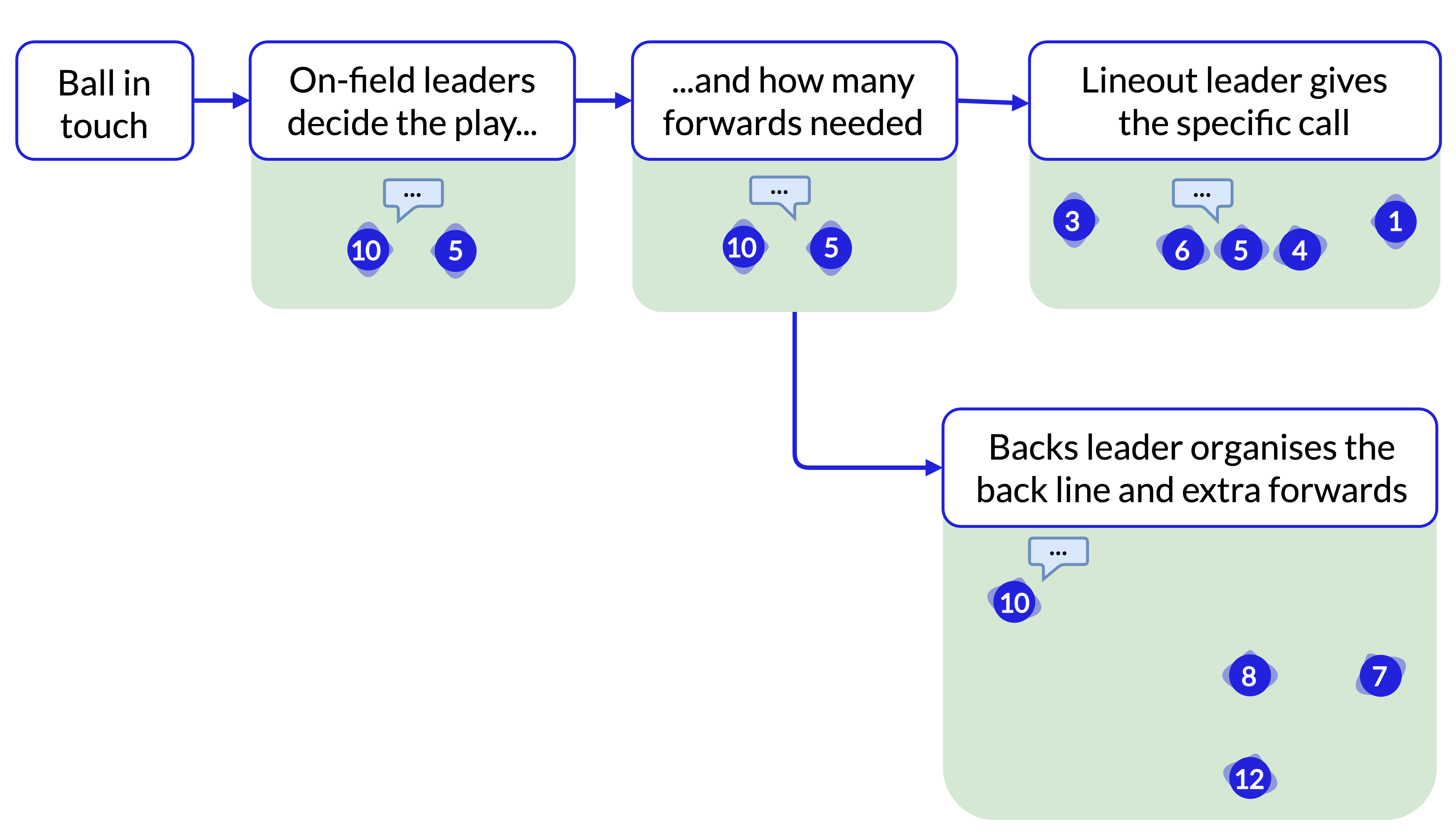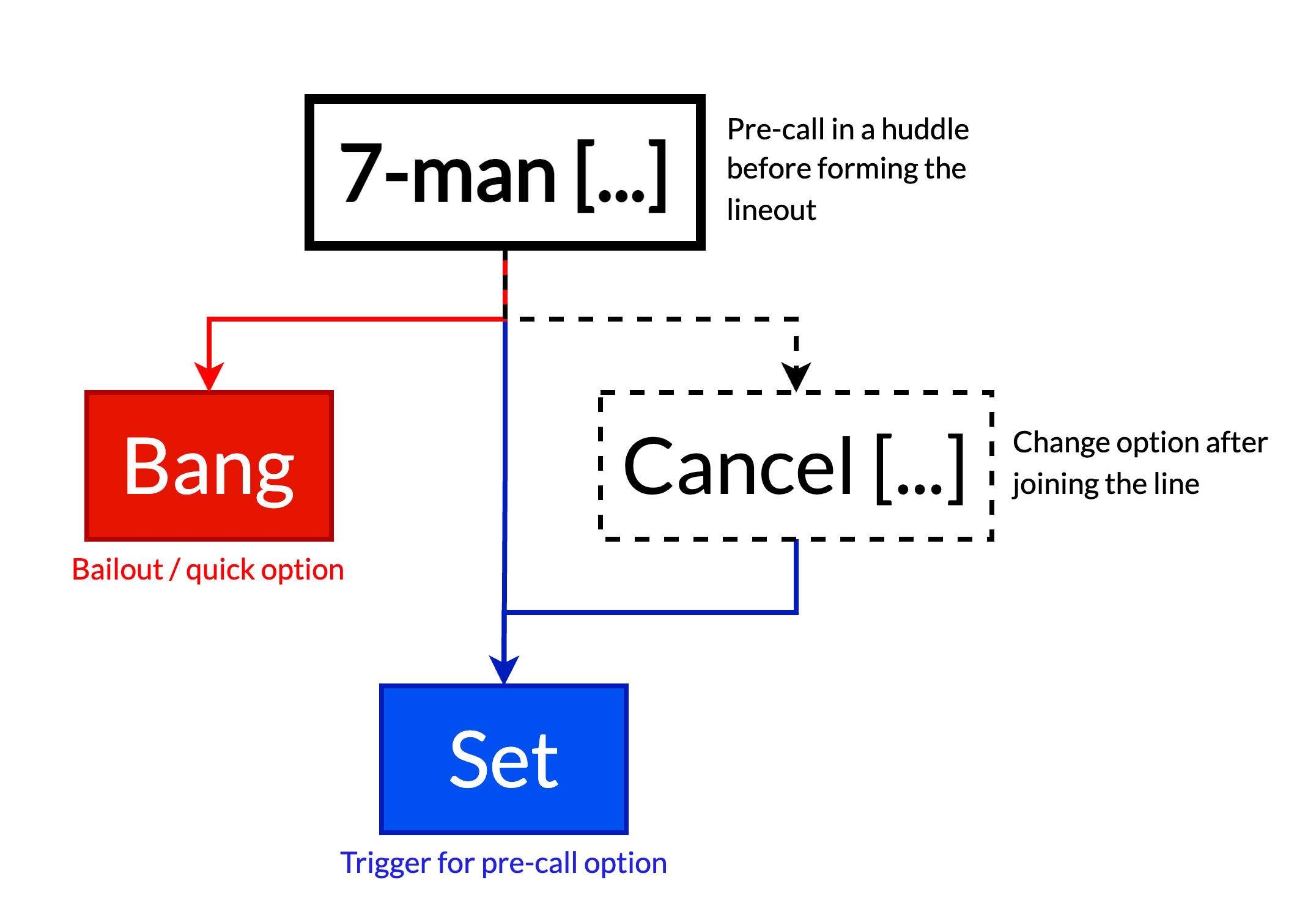Lineout
Table of Contents
Both teams have 10-20 attacking lineouts per game, giving them the opportunity to set up an attack from a controlled platform.
Attack
On our own ball, everything we do should be focused on these two questions:
- How do we beat the defence to win the ball?
- How do we break the gain line and create a scoring opportunity?
Defence
On the opposition ball, we do the opposite:
- How do we force a turnover? (either forcing an error or stealing the ball)
- How do we cut off their attacking options?
Attacking options
Our lineout menu can be summarised by different options for the following:
- Setup - how many players and their formation
- Call - how different movements are defined and communicated among the players
- Play - how the ball is delivered from the lineout

Our default is a 5-man “Squeeze” (1-3-1 formation) with a quick option (“Bang”) to override the call and throw straight to the middle.
If the defence is putting us under pressure, we can vary the formation, the calls, or the numbers.
How a lineout is formed
We pre-call lineouts to avoid tipping off the defence and ensure everyone knows the plan. The lineout caller and the fly half decide between them and organise everyone else.

As soon as the ball is dead, the lineout forwards huddle. The caller announces the formation and play, and players move to position. 9 and 10 organise the backs and any loose forwards not in the lineout.
Calling process

When the huddle is called, the lineout caller will give the formation, call and play to the lineout players. Everyone now knows how to set up and what movements are expected.
In the huddle, the caller gives the formation, call, and play. Once in position, they trigger the move with “Set”, syncing everyone’s timing.
Every lineout includes a “Bang” option — a quick throw to a pre-set pod (middle or back), if needed.
If “Bang” isn’t viable, the caller can say “Cancel”, give a new call, allow players to reset, then use “Set”.
 EGRFC Playbook
EGRFC Playbook